Table of Contents
“How much revenue should my business expect if I hire you?”
This is, by far, the #1 question I get asked during sales consults for our SEO agency, Webris.
Realistically…there’s no way to know for sure. However, if we use the data we have available, we can get pretty damn close.
This article will cover ROI forecasting methods for SEO.
NOTE:
This post is part 2 in our series about projecting organic traffic.
Please refer to our Part 1 on how to forecast SEO growth before moving forward here.
This topic is a little dry – please check out the video (in the header) and the slide deck (below) for a visual walkthrough of this material.
The basic formula for ROI
ROI = (Revenue – Cost) / Cost
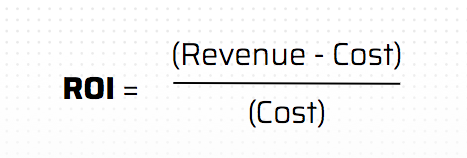
For SEO specifically…
ROI = (Revenue from Organic Search – Cost of SEO) / Cost of SEO

Personally, I like to take it 1 step further…
ROI = (Projected Δ Organic Revenue – Cost of SEO) / Cost of SEO
Δ = Change

Focusing on the change in organic revenue ensures we’re looking at the potential impact of our services. It’s not fair for us to claim ALL the revenue coming from organic search, we should be focusing on the revenue we drive as a result of our services.
Defining the formula inputs
The Cost of SEO varies, depending on your organization:
- The retainer fee / costs to an agency our vendor
- Cost of doing business in-house (freelancers, staff, etc)
For the purpose of this article, we’ll set the “Cost of SEO” to $60,000/year ($5k monthly retainer).
Next we need Projected Δ Organic Revenue.
- The projected amount of revenue driven as a result of our SEO services
- This needs to be calculated
To illustrate these calculations, I’ll use 2 types of sites:
- Ecommerce
- Lead generation
ROI of SEO for Ecommerce sites
This calculation would apply to any website that sells products / services directly on their website, think Nike, Fiver or Target.
Our job is to find the Projected Δ Organic Revenue – this requires some additional inputs.
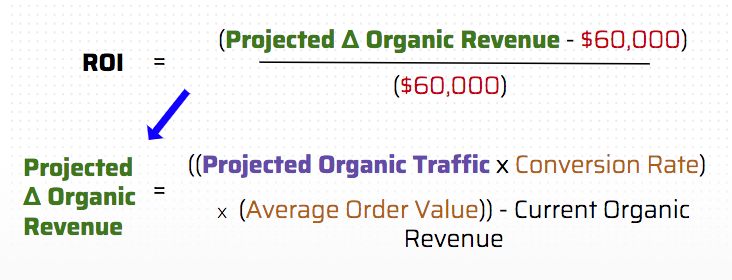
Projected Δ Organic Revenue = ((Projected Organic Traffic x Conversion Rate) x AOV)) – Current Organic Revenue
This sub formula then requires additional inputs:
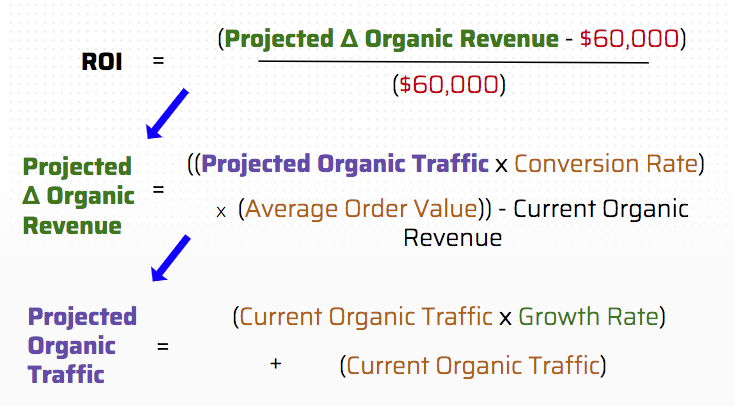
Projected Organic Traffic = (Current Organic Traffic x Growth Rate) + Current Organic Traffic
We can get Current Organic Traffic from Google Analytics. Make sure you set the date to a full year’s worth of data – keep this date consistent throughout the entire process.
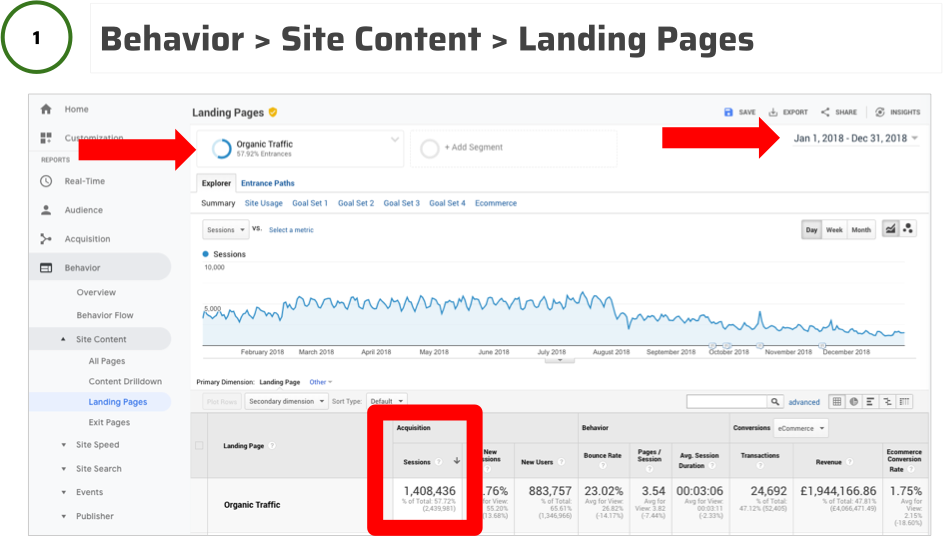
We can get Growth Rate from the our organic traffic projection tool.
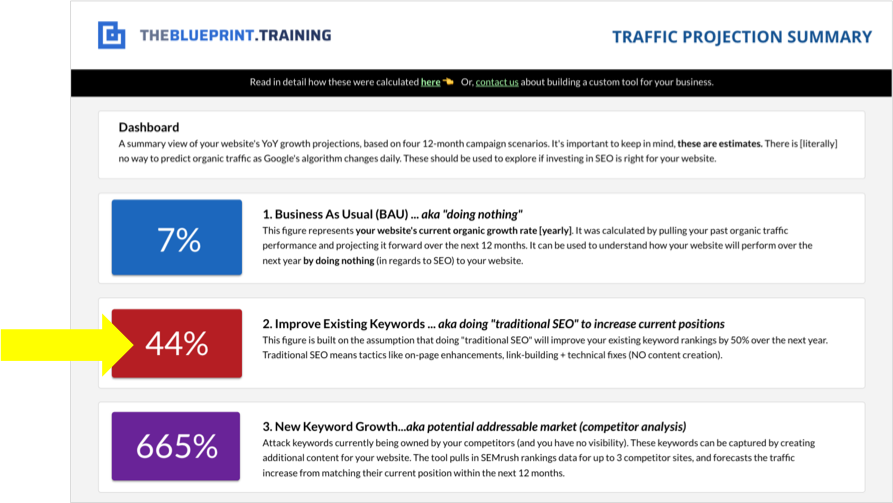
I like to use growth rate #2 – Improve Existing Keywords. This keeps the projection more reasonable.
Inputs:
- Organic Traffic = 1,408,436
- Organic Growth Rate = 44%
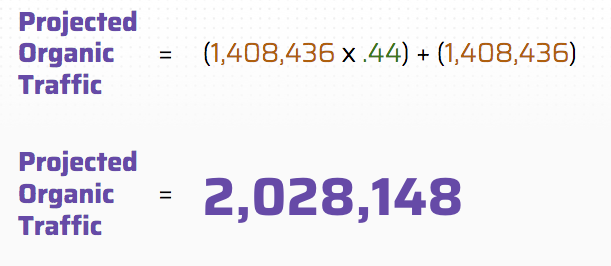
You can plug that figure back into the previous equation.
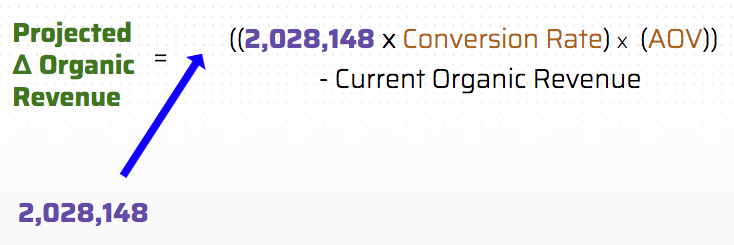
We can get all of the remaining inputs from the Conversion reports in Google Analytics.
- Conversion Rate
- AOV
- Current Organic Revenue
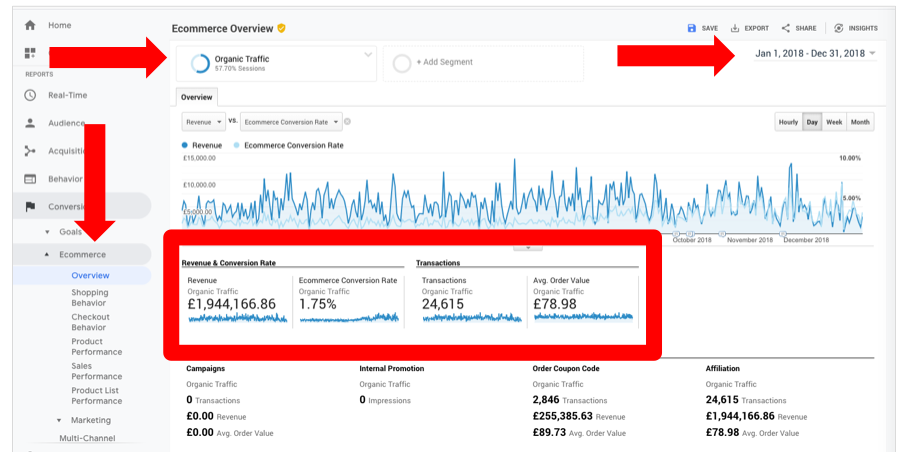
Just plug these back into the equation:
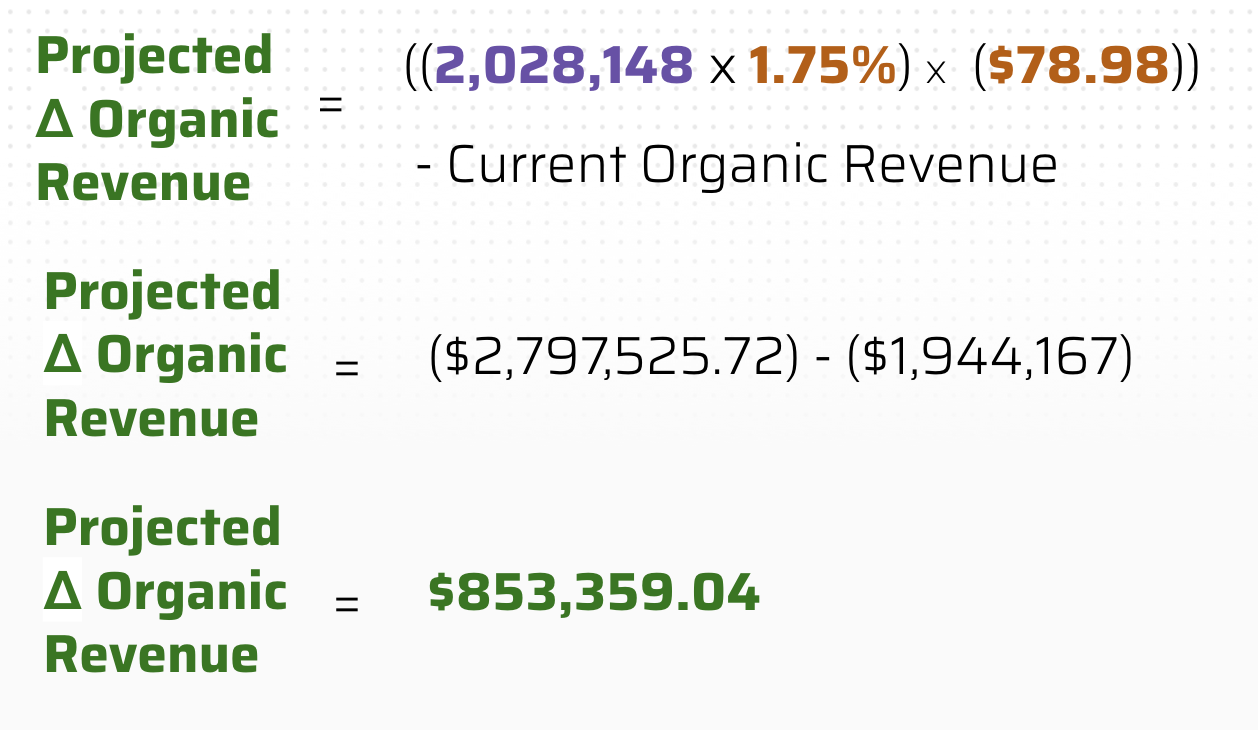
Finally, we have the Projected Δ Organic Revenue which will allow us to calculate the official ROI.
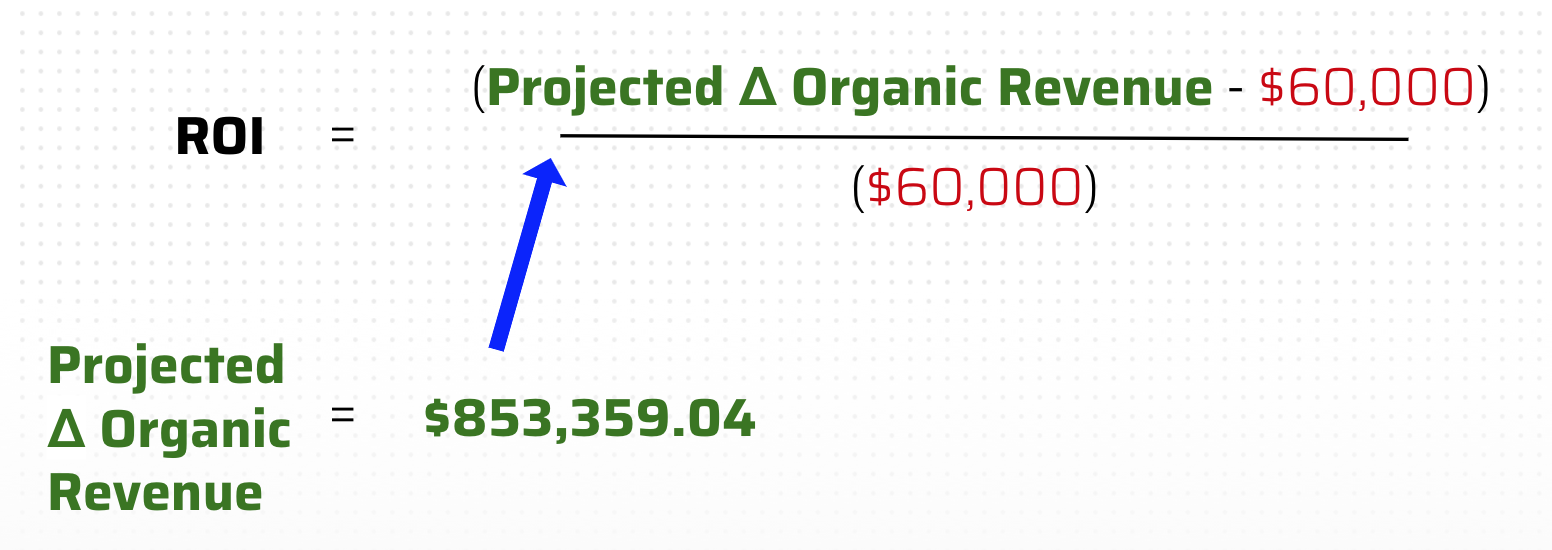
ROI = ($853,359.04 – $60,000) / ($60,000)
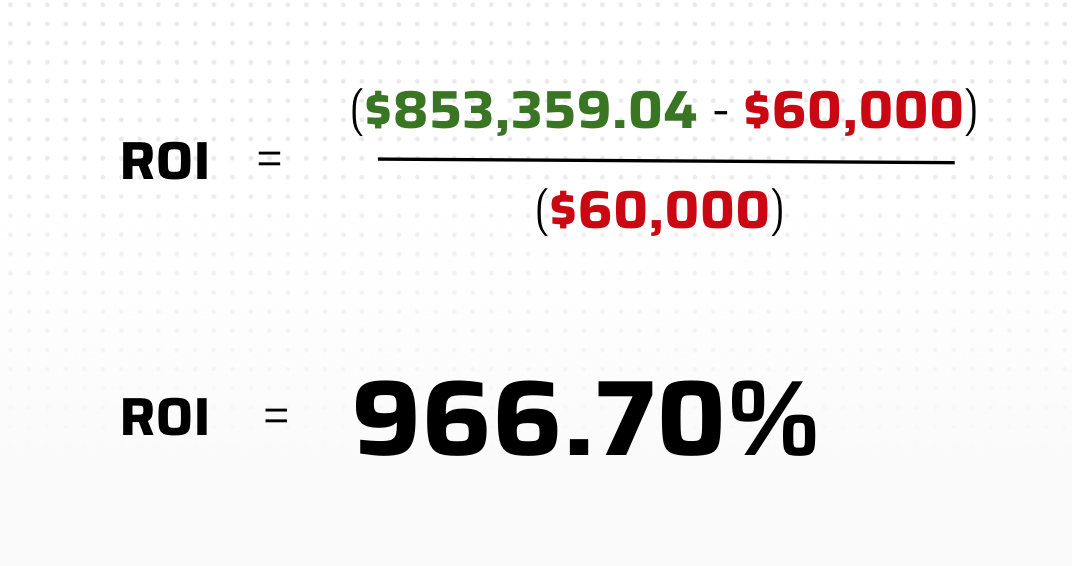
ROI = 966.70%
In other words, if this company were to pay us $60k yearly for our SEO services, we’d deliver over 900% return.
ROI of SEO for lead generation sites
This calculation would apply to any website that collects leads via their website, think an Attorney or SEO agency.
This one is more challenging because we don’t have sales data readily available – we need to calculate it.
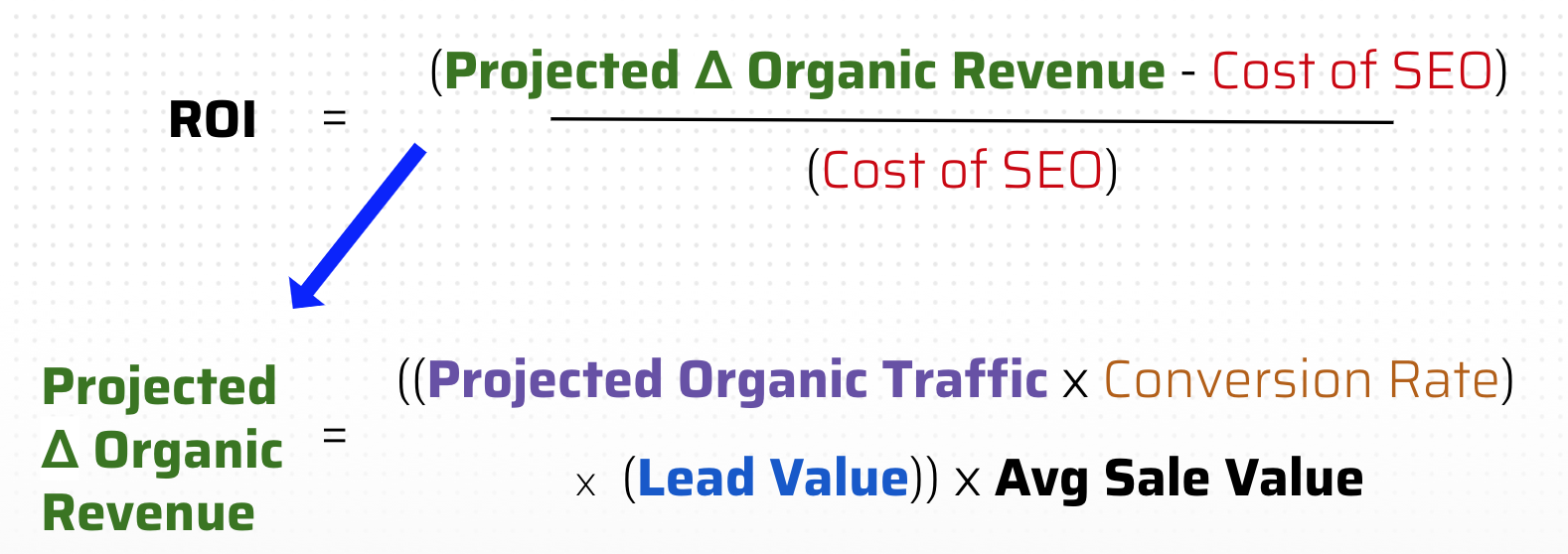
We need additional inputs to make this work:
- Projected Organic Traffic – the same as Ecommerce
- Lead Value – the monetary value of each lead that comes via your website through organic search
- Avg Sale Value – the monetary value of a closed lead to that business
Each of these has their own formula we need to figure out:
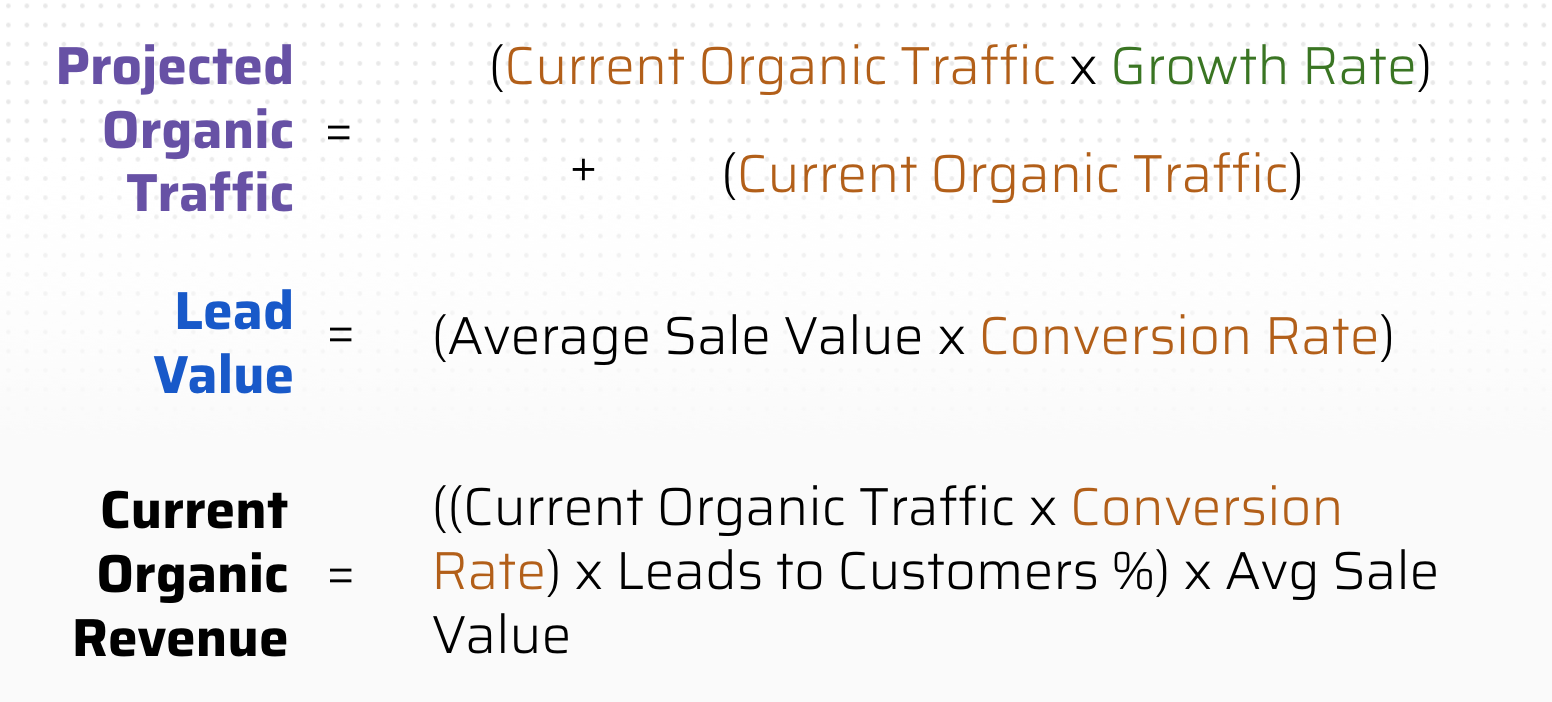
Let’s start with finding the Projected Organic Traffic – we can get all the data we need from the Landing Pages report in Google Analytics.
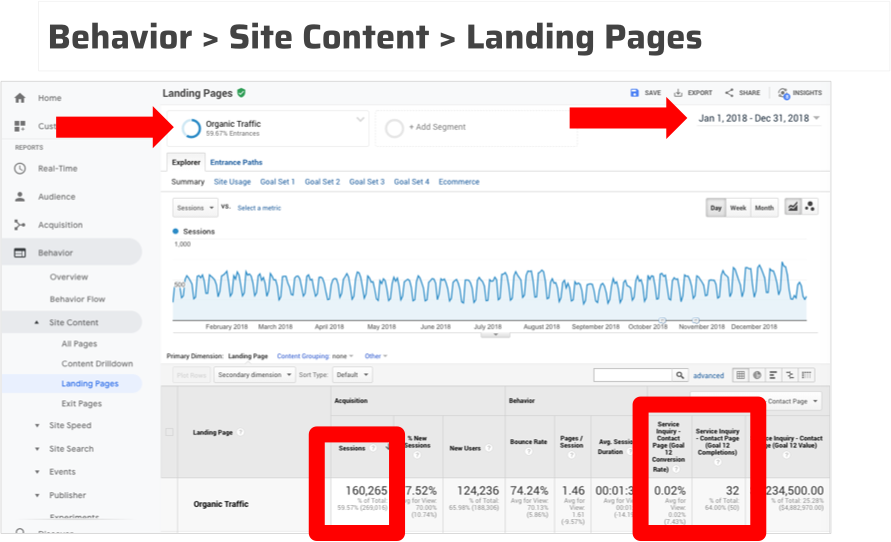
Inputs:
- Current Organic Traffic = 160,265
- Growth Rate = 44%
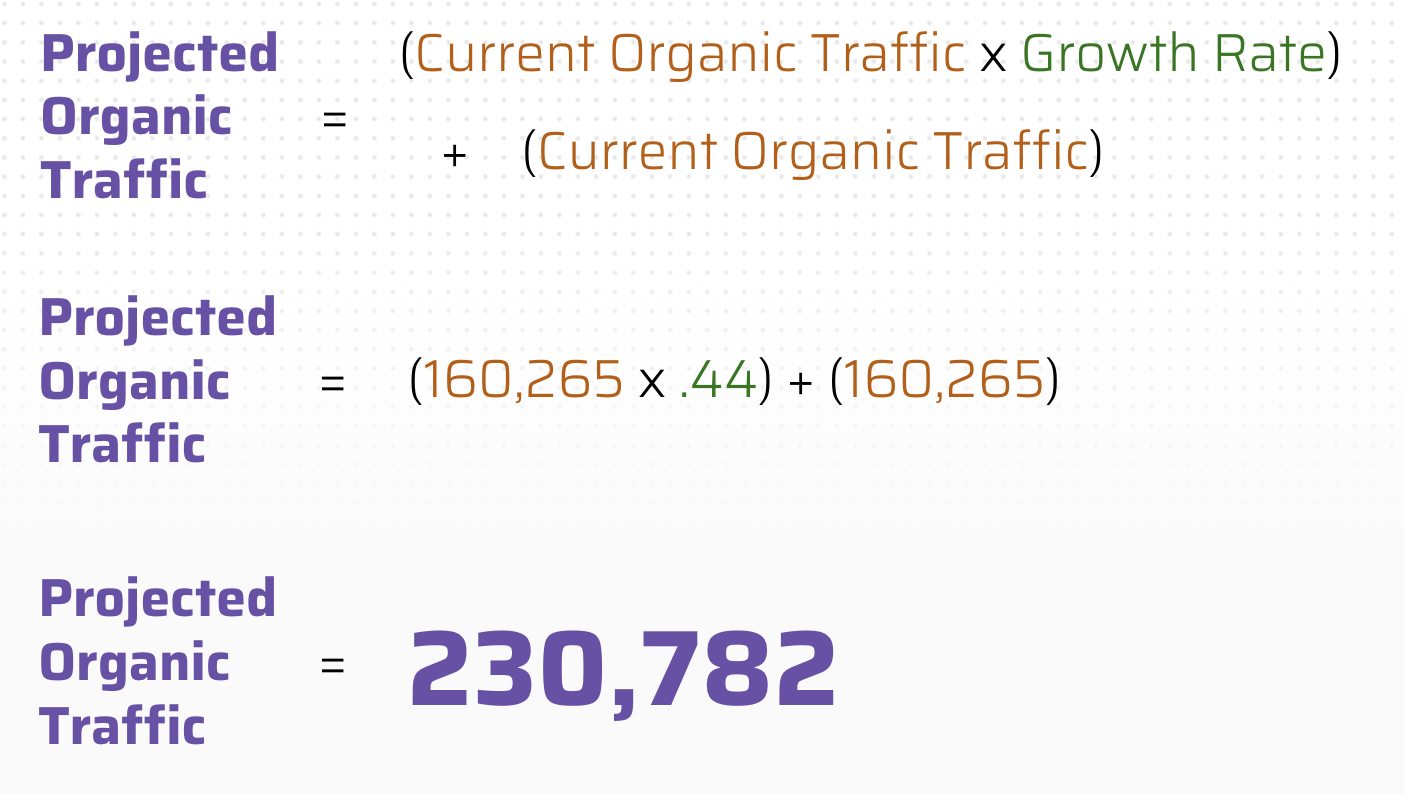
Plug that 230,782 back into our Projected Δ Organic Revenue formula.

Now let’s find the Lead Value.
Inputs:
- Average Sale Value – you’ll need to ask your client for this figure. It’s the average value of a closed deal. For demonstration purposes, let’s say the average sale is $60,000 (yearly value)
- Conversion Rate – the website’s conversion rate for leads from Google Analytics (organic only). Make SURE the website is tracking lead submissions properly, otherwise this calculation is moot
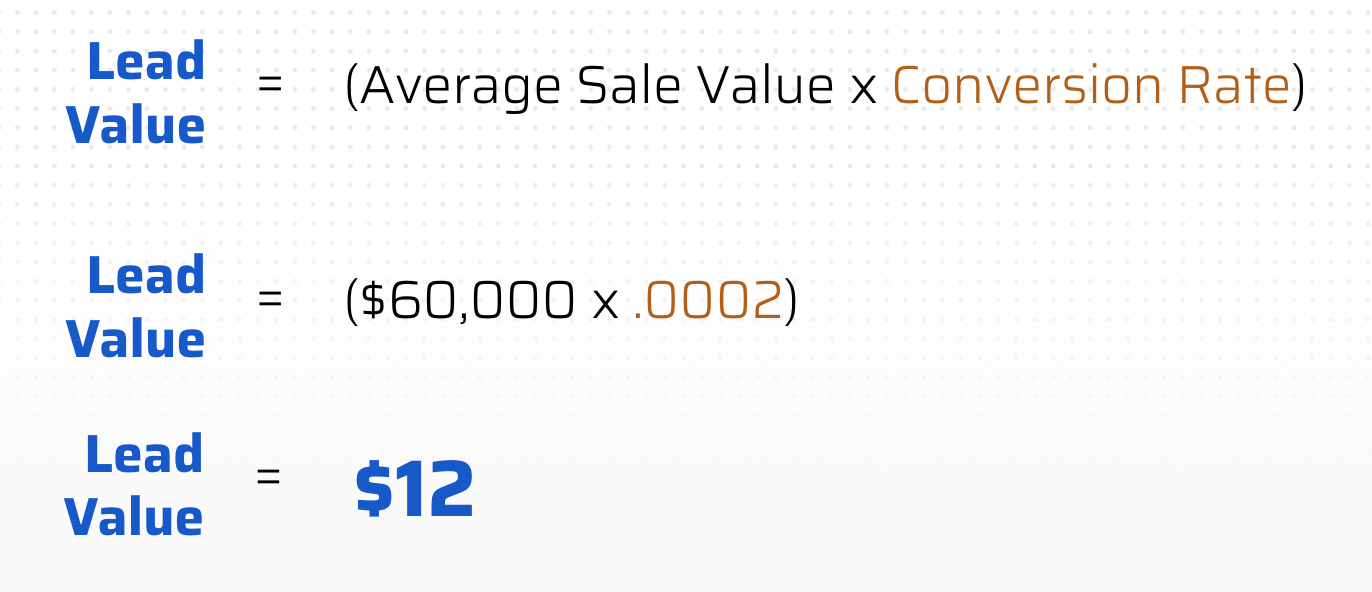
The final piece is finding the Current Organic Revenue, aka the amount of yearly revenue generated from organic search channels.

If the website you’re running this for has a CRM, you can grab this information there. If not, we can calculate it.
Inputs:
- Current Organic Traffic – the total amount of Organic Visits received the previous year
- Conversion Rate – the website’s conversion rate for leads from Google Analytics (organic only)
- Leads to Customers % – the conversion rate from MQL (aka website lead) to paying customer. For example, if a website generates 100 leads and 20 of those become paying customers, the conversion rate is 20%
- Avg Sale Value – same as before, the average value of a closed deal. For demonstration purposes, let’s say the average sale is $60,000 (yearly value)
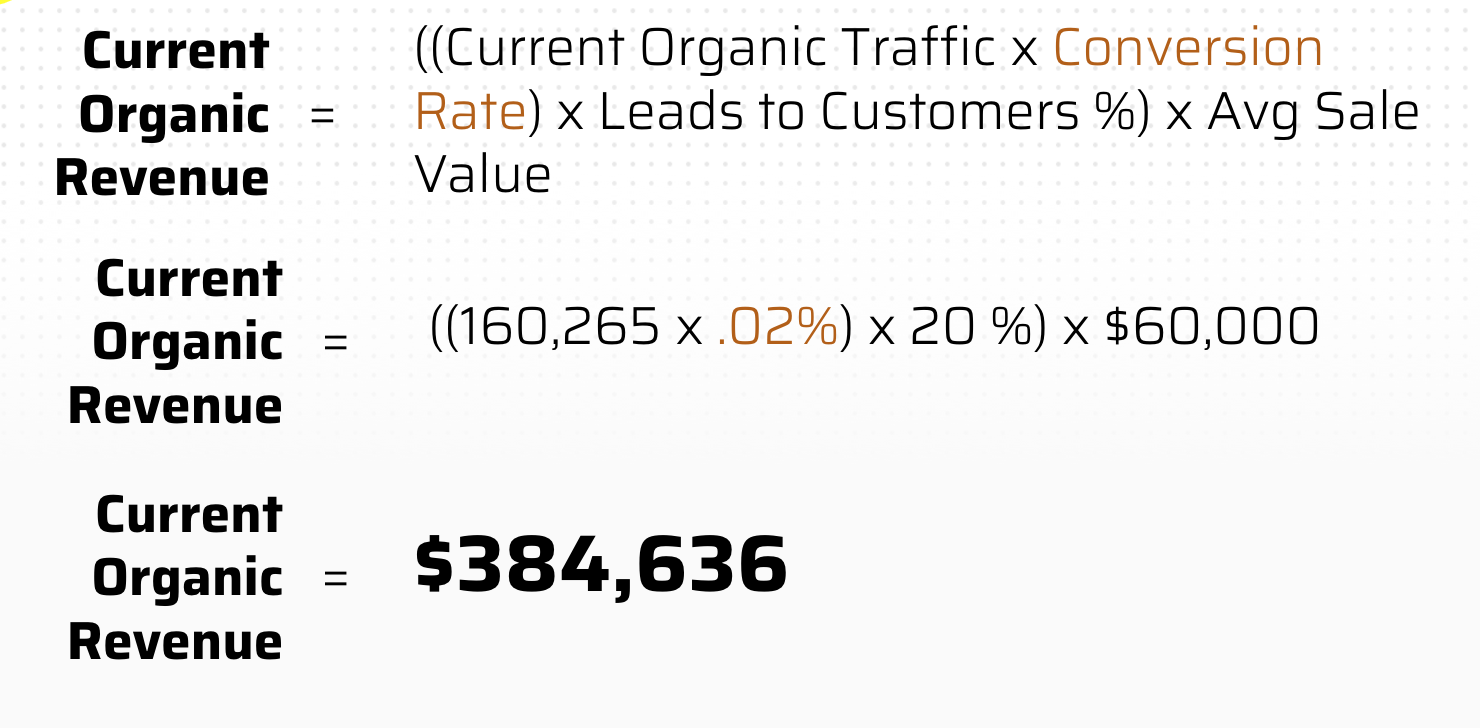
Finally, we can calculate Projected Δ Organic Revenue:

Which we can now use to find the ROI for our lead generation website:

A much more complex analysis, but leading to the same conclusion.
Grab the projection templates
As you can see, this can be a bit of work. Make sure to grab the template we built for you. It handles all the math for you, all you need to do is give it a handful of inputs.
We also included a breakeven analysis in the templates. This tells you the exact amount of sales / leads and traffic needed to “break even” on the cost of your retainer.

Got questions? Drop them below or sign up to get FREE access to our private Slack Channel.

